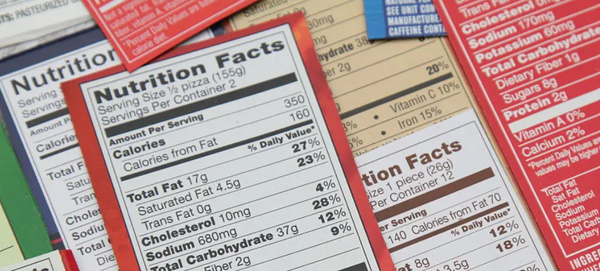
Label-Reading 101
by Jessica Brandt, Poofy Organics Guide
Welcome to the world of reading labels on your personal care products. Maybe you just welcomed a brand new bundle of joy into the world? Or perhaps a health scare got you thinking twice about what you're putting on your body? Regardless the reason, you're here! You've decided to take matters into your own hands and read labels for yourself. Where do you begin? The good news is that you don't need an advanced degree in chemistry to understand what makes some products healthier for your body, and the environment, than others.
Here are a few basic guidelines that I follow.
--The fewer ingredients, the better. Just like with your food label, if the product list is 2 paragraphs long, that's generally a good clue that it might not be the healthiest option.
--Look for ingredients that you can pronounce. Things you recognize from nature. Most of us are familiar with a whole foods diet. Think of your personal care products in the same way. Is the label easy to read, with ingredients that sound like they're on the healthy side? Example: Methylisothiazolinone. I cannot pronounce it, and indeed there are studies that suggest it might have potential for adverse reactions.
--Avoid ingredients with numbers attached to them, examples: PEG-80, Polyquaternium-10. Wholesome, healthy ingredients won't have numbers attached.
--These are some common word cells that you'll find in various forms in many products that I prefer avoiding: lauryl, laureth, methyl, paraben, parfum, PEG. You'll find many labels that have ingredients with some part of those words. Examples: sodium lauryl sulfate, methylparaben, PEG-150. They have the potential to trigger allergic reactions, sensitivites or other adverse reactions, but also can have potentially negative consequences on our environment.
--Look for the USDA certified organic seal. If a product carries the seal, it means it's made from 95%+ organic ingredients. The other 5% has to be from a list of allowable ingredients, it can't just be anything. And often the other 5% are ingredients that are from the earth, like baking soda and other minerals. If the product contains 70%+ organic ingredients it can say: made with organic oils. But do be aware that just because a brand is named X Organics, that doesn't mean it is making organic products, or that they are healthy alternatives even. It's all about the ingredients!
Let's practice! Compare the following 2 labels.
I like to compare baby products as examples, because I think we'd all agree that those products should contain the most minimal and safest choices.
***Baby Wash A: Purified Water, Decyl Polyglucose, Organic Vegetable Glycerin, Organic Apple Cider Vinegar, Xanthan Gum, Citric Acid.
***Baby Wash B: Water, Cocamidopropyl Betaine, Decyl Glucoside, Sodium Cocoyl Isethionate, PEG-80 Sorbitan Laurate, Glycerin, Sodium Benzoate, Sodium Methyl Cocoyl Taurate, Fragrance, Citric Acid, PEG-150 Distearate, Disodium EDTA, Polyquaternium-10.
Product A has 6 ingredients. Product B has more than twice that at 13. The 2nd label contains several of the red flags that I mentioned above. I don't think you have to be a label-reading expert to know which one has the most minimal potential for adverse reactions. Like anything, the more you read labels, the more comfortable you are and the easier it gets. And always remember this: do the best you can with the knowledge you have, and when you know better, you do better. Never beat yourself up for your product selections in the past. But if you truly want to use the very best of the best, you just need to start reading labels. The great news is that there are plenty of great, safe products on the market. So now, you know the basics, happy label-reading!
Want to take it a bit further and gain a more in-depth understanding of ingredients you might want to avoid, as well as which free resources you can turn to in your research?
_______________________________________________________________
Jess is a mother of 2, blogger, and label-reading advocate who lives in WI. She has been a Poofy Organics Guide since 2014.
